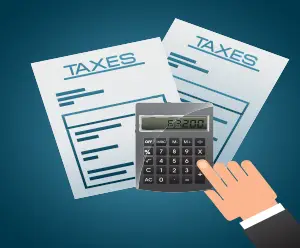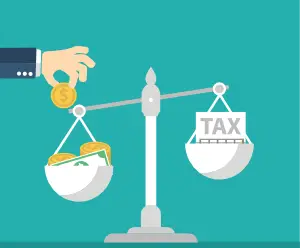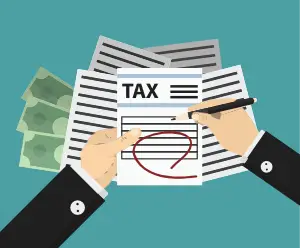
Understanding the IRS Substitute for Return
Click to ask Mike Ask Mike The Internal Revenue Service (IRS) Substitute for Return (SFR) is a term many taxpayers

understanding the ins and outs of the 10-year statute of limitations (SOL) is essential. However, it’s not merely a matter of counting down from the date of assessment. Various events can suspend or extend this period, significantly impacting taxpayers’ financial circumstances. Let’s delve into these complexities to gain a clearer understanding of how the SOL can be prolonged and what it means for taxpayers.
Tolling the Clock: What Does it Mean?
Firstly, let’s clarify the concept of tolling the collection statute. Essentially, tolling involves pausing the countdown on the 10-year period during which the IRS can collect taxes owed. Imagine a scenario where you’ve received a tax assessment, and six years have passed, leaving the IRS with four more years to collect. If you apply for an offer in compromise, the IRS halts the clock while reviewing your application. If, after six months, your offer is rejected, the collection limitations period restarts. However, because the clock was paused for those six months, the IRS still has four years to collect the tax.
Understanding tolling events is crucial because they can overlap, affecting the duration of the suspension. Let’s explore some common scenarios where the statute of limitations on IRS collections may be suspended:
Bankruptcy:
Filing for bankruptcy triggers an automatic stay on tax debts included in the bankruptcy proceedings. This suspension remains in effect throughout the bankruptcy proceedings and an additional six months.
Installment Agreement:
Requesting an installment agreement tolls the SOL from the request until the IRS makes a decision. Additionally, the SOL is suspended for 30 days after a denial or termination of an installment agreement. Appeals for rejected installment agreement requests also toll the SOL.
Innocent Spouse Relief:
A request for innocent spouse relief pauses the statute until the expiration of the 90-day period to petition the tax court. If a taxpayer petitions the tax court following an IRS denial, the SOL remains suspended until the final court decision plus 60 days.
Offer in Compromise:
Submission of an Offer in Compromise tolls the statute from the request until the IRS renders a decision, plus an additional 30 days.
Collection Due Process Hearing:
Requesting a Collection Due Process Hearing results in the suspension of the SOL while the hearing is pending, particularly if requested within 30 days after receiving a final notice of intent to levy.
Living Abroad:
Residing outside the U.S. for six consecutive months suspends the SOL, with the statute expiring six months after the taxpayer’s return to the United States. Good faith communication with the IRS might prevent tolling or extension of the CSED, although it’s challenging to achieve.
Military Deferment:
If military service affects the IRS’s ability to collect, the CSED is suspended during the taxpayer’s military service plus 270 days. In combat zones, the collection statute is suspended plus an additional 180 days.
Taxpayer Assistance Order:
Filing Form 911 tolls the statute while the case is under review. This form is typically submitted when a taxpayer faces imminent economic hardship due to an impending tax levy or lien.
Litigation or IRS Lawsuit:
If the IRS initiates legal action against the taxpayer for back taxes or if the taxpayer is engaged in litigation with the IRS, the SOL is suspended.
Voluntary Extension:
The IRS may extend the 10-year statute of limitations on collection if the taxpayer agrees voluntarily. Such extensions, typically for five years, may be requested by the IRS if certain assets are expected to become available after the original CSED date.
Conclusion:
Understanding the various events that can extend or toll the 10-year statute of limitations on tax debt collection is essential for taxpayers seeking clarity on their financial obligations. While extending the SOL may sometimes be beneficial, consulting with a tax professional before agreeing to any extension is highly recommended to ensure the best possible outcome for your financial situation. By gaining a deeper understanding of these complexities, taxpayers can navigate the terrain of tax debt collection with greater confidence and clarity.
You can now ask our AI assistant any questions you have about your tax debt or any tax-related issues. Whether you’re unsure about payment plans, need clarification on penalties, or want information on how to resolve your tax situation. Our AI is ready to assist you with all your tax-related concerns.

By interacting with our AI assistance, you agree to our terms & conditions. Enjoy our AI Tax Assistant responsibly.
Ask me any questions...
Related Posts

Click to ask Mike Ask Mike The Internal Revenue Service (IRS) Substitute for Return (SFR) is a term many taxpayers

Click to ask Mike Ask Mike The Internal Revenue Service (IRS) Substitute for Return (SFR) is a term many taxpayers

Click to ask Mike Ask Mike The Internal Revenue Service typically operates within a 10-year window, commencing from the

Click to ask Mike Ask Mike The Internal Revenue Service (IRS) operates within specific timeframes dictated by statutes of limitations

Click to ask Mike Ask Mike Entering into an Installment Agreement (IA) with the IRS can provide much-needed relief for
Recent Posts

Click to ask Mike Ask Mike The Internal Revenue Service (IRS) Substitute for Return (SFR) is a term many taxpayers

Click to ask Mike Ask Mike The Internal Revenue Service (IRS) Substitute for Return (SFR) is a term many taxpayers

Click to ask Mike Ask Mike The Internal Revenue Service typically operates within a 10-year window, commencing from the

Click to ask Mike Ask Mike The Internal Revenue Service (IRS) operates within specific timeframes dictated by statutes of limitations

Click to ask Mike Ask Mike understanding the ins and outs of the 10-year statute of limitations (SOL) is essential.
Disclaimer: This is educational content, not legal, accounting, or tax advice.
This is a tax debt resource website, not to be used in lieu of a tax attorney or for legal advice. All information, Ai chat responses, articles, materials, and content are intended to inform users on a variety of tax topics. In no way is it intended to be construed as accounting, legal, tax, other services or advice. This site is not intended to be used to avoid tax penalties or tax debt that may be imposed by law. Terms and Conditions. Your use of this site constitutes acceptance of the following terms and conditions.
This is a tax debt resource website, not to be used in lieu of a tax attorney or for legal advice. All information, Ai chat responses, articles, materials, and content are intended to inform users on a variety of tax topics. In no way is it intended to be construed as accounting, legal, tax, other services or advice. This site is not intended to be used to avoid tax penalties or tax debt that may be imposed by law. Terms and Conditions. Your use of this site constitutes acceptance of the following terms and conditions.
© 2023 · Tax Debt Monster, Inc. All rights reserved

For all Tax Professionals that would like to partner up with us. By partnering with us, you’ll help us connect and make a positive impact in the tax community. Partner up with us and receive a complimentary Ai Tax Sidekick to help support your clients at no cost! Click here if you’re interested in our Partner-Up program

By interacting with our AI assistance, you agree to our terms & conditions. Enjoy our AI Tax Assistant responsibly.
How may I help you with your tax issue?